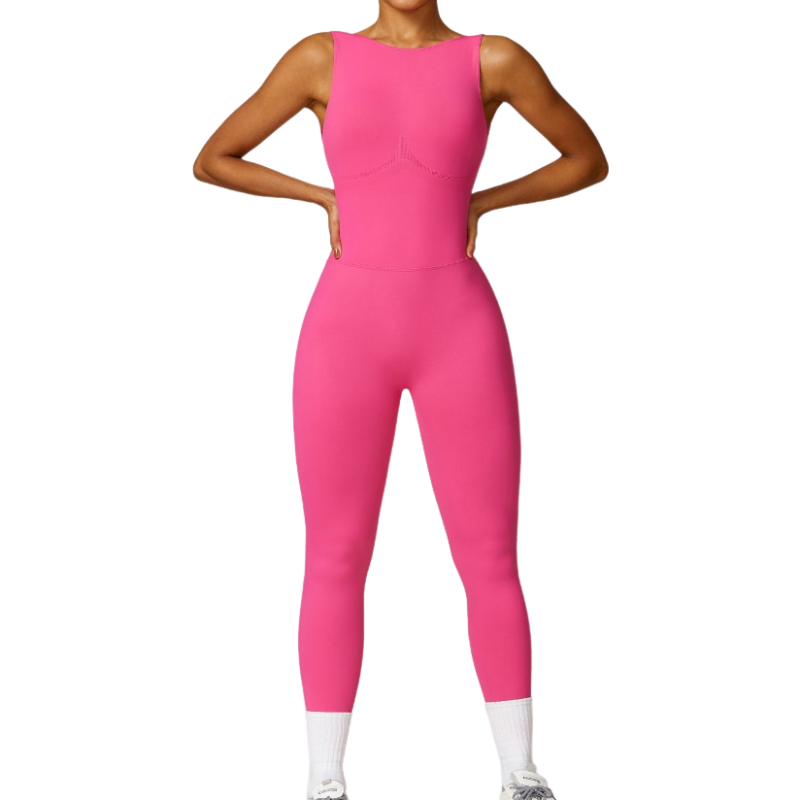In the world of yoga apparel, the choice of fabric plays a crucial role in determining comfort, performance, and overall experience during practice. Two popular fabric options that have gained significant attention are seamless fabrics and seamed naked-feeling fabrics.
Seamless Fabrics
Seamless fabrics are crafted using advanced knitting technologies that create a one-piece garment without any visible seams. This manufacturing process results in a smooth and continuous surface, minimizing friction and potential irritation against the skin. The absence of seams also contributes to a sleek and streamlined appearance, enhancing the aesthetic appeal of the yoga clothing.
One of the key advantages of seamless fabrics is their exceptional stretchability. These fabrics are engineered to stretch and recover with ease, allowing for unrestricted movement during yoga poses. The elasticity ensures a snug fit that contours to the body's shape, providing support and reducing the risk of fabric bunching or sagging.
In terms of moisture management, seamless fabrics often incorporate moisture-wicking properties. They draw sweat away from the skin to the fabric's surface, where it can evaporate quickly, keeping the wearer dry and comfortable throughout the yoga session. This feature is particularly important for intense workouts where excessive sweating is common.
Another notable aspect of seamless fabrics is their durability. The absence of seams reduces the potential for weak points and fraying, making the garments more resilient and long-lasting. However, it's worth noting that seamless fabrics may have limitations in terms of design complexity and the incorporation of additional features such as pockets or ventilation panel

Seamed Naked-Feeling Fabrics
Seamed naked-feeling fabrics, on the other hand, are constructed with individual pieces of fabric that are stitched together to form the garment. Despite the presence of seams, these fabrics are designed to provide a near-seamless feel against the skin, creating a smooth and comfortable experience.
The main advantage of seamed naked-feeling fabrics lies in their greater design flexibility. With the ability to combine different fabric panels and stitch patterns, manufacturers can create more intricate and functional designs. This allows for the inclusion of strategic seams for enhanced support in specific areas, such as around the waist or under the bust, as well as the addition of pockets or ventilation areas for improved functionality.
Moisture management is also a strong suit of seamed naked-feeling fabrics. Many of these fabrics are treated with moisture-wicking finishes or are made from breathable materials that facilitate efficient sweat evaporation. Additionally, the seams can be strategically placed to enhance airflow and ventilation, further contributing to a cool and dry sensation.
In terms of durability, seamed naked-feeling fabrics can be highly resilient depending on the quality of the stitching and the fabric used. High-quality seams and robust fabrics can withstand frequent use and washing without significant degradation.

Comparative Analysis
When comparing seamless and seamed naked-feeling fabrics, several factors come into play. Comfort is a subjective aspect, but both fabric types strive to minimize discomfort. Seamless fabrics offer a continuous, smooth surface that may be preferred by those who are highly sensitive to seams, while seamed naked-feeling fabrics can provide a comparable level of comfort if the seams are well-constructed and positioned.
In terms of performance, both fabrics offer stretch and moisture management capabilities. Seamless fabrics excel in providing an all-over stretch and a seamless fit, which can be advantageous for certain poses and movements. Seamed naked-feeling fabrics, with their potential for targeted support and ventilation, may be better suited for more intense or demanding yoga practices.
Style and design options are where seamed naked-feeling fabrics have an edge. Their ability to incorporate various elements and create more detailed designs gives them greater appeal in terms of aesthetics and functionality. However, seamless fabrics offer a clean and minimalist look that some individuals prefer for a more streamlined appearance.
Price can also be a differentiating factor. Seamless fabrics, due to the advanced manufacturing processes involved, may be relatively more expensive compared to seamed naked-feeling fabrics. This can influence the purchasing decision, especially for budget-conscious consumers.
Conclusion
In conclusion, both seamless and seamed naked-feeling fabrics have their unique merits in the realm of yoga clothing. The choice between them ultimately depends on individual preferences, specific yoga practices, and personal priorities in terms of comfort, performance, style, and budget.



